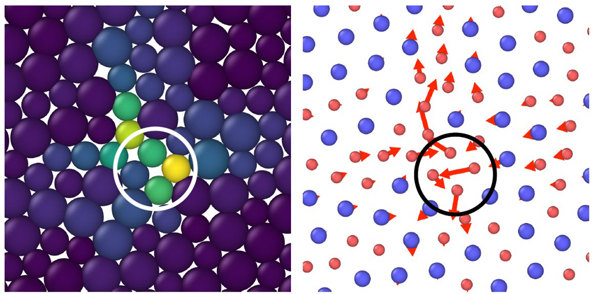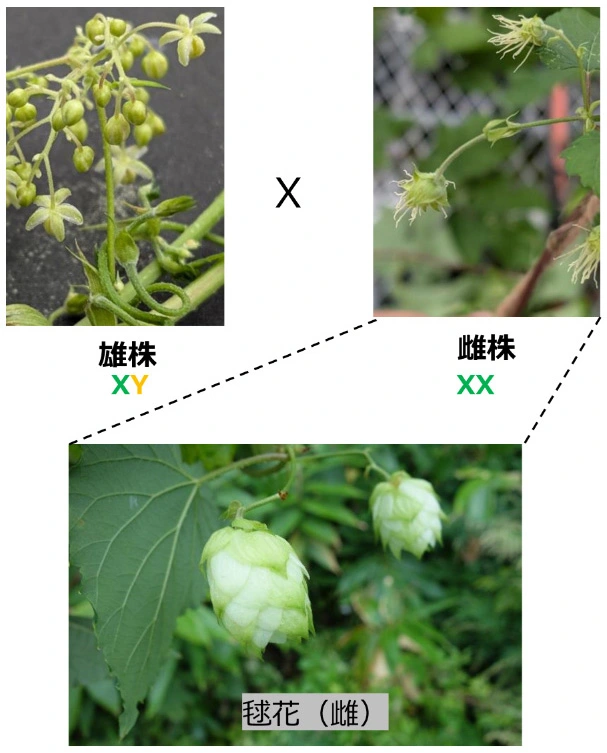2025-06-19 東京大学

2次元アモルファス固体の4粒子からなる欠陥の中心的な四角構造(左)とその振動モード(右)。
<関連情報>
- https://www.rcast.u-tokyo.ac.jp/ja/news/release/20250619.html
- https://www.nature.com/articles/s41467-025-60781-7
ガラス中の隠れた粒子レベルの欠陥の解明 Unveiling hidden particle-level defects in glasses
Yuan-Chao Hu & Hajime Tanaka
Nature Communications Published:17 June 2025
DOI:https://doi.org/10.1038/s41467-025-60781-7
Abstract
In crystals, defects are well-defined and crucial to their mechanical properties. In contrast, the structural disorder in glasses makes it challenging to directly identify defects at the particle level. However, low-frequency quasi-localised modes (QLMs) in glasses provide valuable insights, acting as mechanical defects associated with shear transformation zones and soft spots. Using molecular dynamics simulations of two-dimensional glasses, we identify a particle-level defect responsible for generating QLMs. The primary QLM originates from a “key-core” square of four particles vibrating in a two-in, two-out pattern, interpretable as a microscopic Eshelby inclusion. The motion of these particles induces nearby volumetric and far-field shear deformations, forming a characteristic four-leaf pattern. Despite the structural isotropy of the glass, these QLMs introduce notable mechanical anisotropy, particularly in nano-sized glasses. Crucially, pinning the key-core particles dramatically reduces shear modulus anisotropy, confirming their role as “localised particle-level defects.” This discovery deepens our understanding of glass defects and offers valuable insights for nanoscale glass applications.



